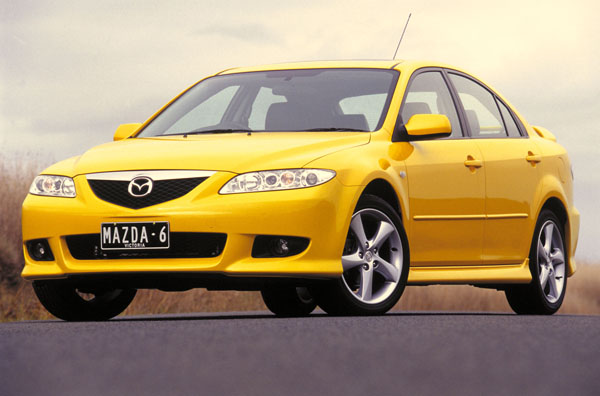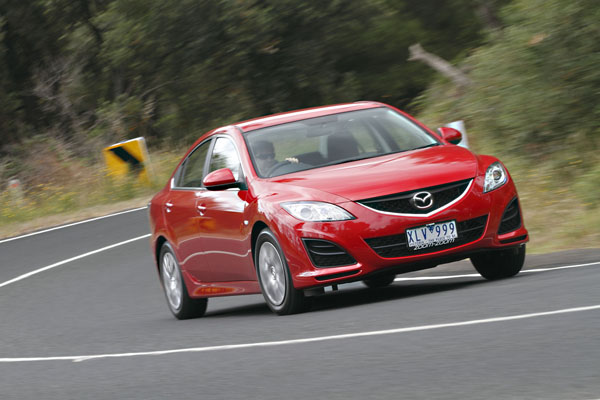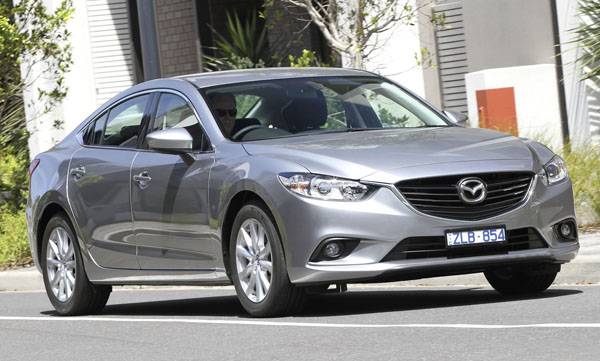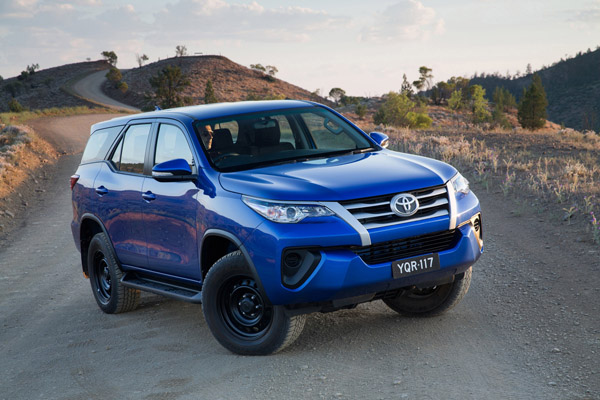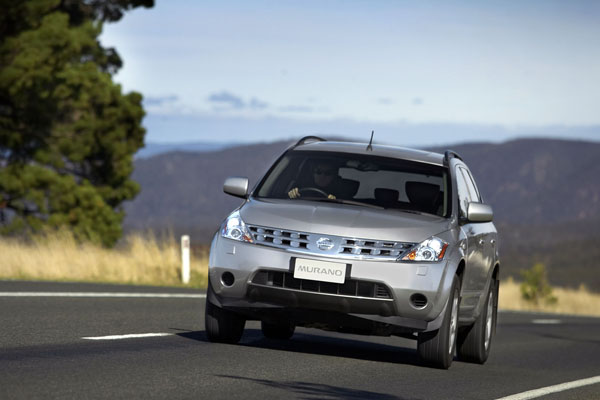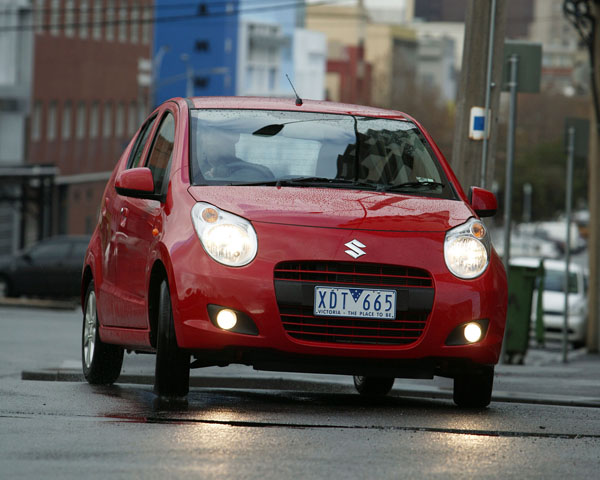Mazda6 was launched in Australia in August 2002 as a replacement for the Mazda 626 and soon built up a good reputation for build quality and reliability, both leading to higher than average resale value.
These Mazdas have pretty good handling, while not quite to the highest European standards it’s getting closer all the time. The extra quality of build offered by the Mazdas over Euro cars makes many buyers choose the Japanese. On several occasions in recent years Mazda has been the number one car importer in Australia.
More stylish that the somewhat staid Mazda 626 it replaced, the ‘6 was ahead of the pack it competed in. The second generation Mazda6 came here in February 2008 and advanced slightly on its honourable ancestor in the shape stakes. The gen-three Mazda6 arrived in December 2012 and again lifted in style; however it wasn’t as far in front as previously as many other designers were going for sleek looks.
As is often the way, the Mazda6 has crept up in size and the latest model is not far short of Camry / Aurion, Commodore and Falcon in its dimensions. Four adults can be transported but may have to compromise on legroom between front and back. The traditional family load of mum, dad and three junior travellers works well.
Back seat headroom in all models is good, though not overly generous due to the stylish slope of the roof. The station wagon has extra headspace over the back seat due to its extended roofline.
Unusually for fully imported Japanese cars, Mazda6 is offered in three body types: sedan, hatch and station wagon. The third generation doesn’t have a hatch variant, but the wagon of that period is a sensible cross between a hatch and a wagon. Not all model levels are offered in all body shapes.
Mazda6 is powered by a four-cylinder petrol engine or a four-cylinder turbo-diesel.
The original petrols had a 2.3-litre capacity. A new design of 2.5-litre four-cylinder engine was introduced with the Series 2 Mazda6 launched in 2008, an all-new unit using Mazda’s ground breaking SkyActiv technology.
Mazda was in the vanguard of Japanese makers with turbo-diesel engines in cars. A Mazda6 diesel was sold from October 2006. At that time it had a capacity of 2.0 litres, this was increased to 2.2 litres, with a corresponding increase in torque in the 2008 new-generation Mazda6.
Until 2012 the diesels came only with a six-speed manual gearbox, which resulted in rather limited sales. It makes a good country car due to long-range capability.
Transmission options in the Mazda6s with petrol engines were originally five-speed manual or four-speed tiptronic automatic. With the launch of the updated model in August 2005, these were improved by the addition of a six-speed manual or five-speed automatic. These transmission choices continued into the new model of 2008. From the gen-three of December 2012 all have six-speed autos.
An excellent model is the high-performance Mazda6 MPS, launched in October 2005. It has a turbocharged version of the 2.3-litre engine to give it plenty of oomph off the line. Handling was aided by the use of all-wheel-drive. The MPS was discontinued with the launch the second-generation Mazda6, a victim of its smaller, nimbler brother, the Mazda3 MPS. (Note that the ‘3 MPS is two-wheel-drive, through the front wheels.)
Mazda has dealers in most areas of Australia. Obviously they aren’t common in the outback, but good communication back to head office can generally solve any unexpected problems.
The Mazda6 is a complex machine so it’s best to leave servicing and repairs to the professionals. A good amateur mechanic will be able to do some work, but we recommend they stay away from safety related areas. Have a workshop manual on hand. Underbonnet access isn’t too bad.
Insurance costs are about average for a fully imported Japanese car and we know of no major company that charges an extra premium for the Sports Hatch.
WHAT TO LOOK FOR
Check that the engine starts promptly and settles into a steady idle within a few seconds of kicking over.
An automatic transmission that’s slow to go into gear, or that hunts up and down through the ratios could be due for a service, or a full overhaul.
A manual gearbox that’s reluctant to go into gear is also likely to need attention. Fast changes from third to second are often the first to play up.
Listen for a knocking noise from the universal joints inside the front wheels. Turn the steering wheel to full lock at very slow speeds to the right and the left and listen for the sound, a quiet car park is usually the best place to do this.
Check for crash repairs that haven’t been done correctly. These can lead to body rust and a weakening of the complete structure.
CAR BUYING TIP
Sounds like very basic advice – but never buy a car without having a full inspection from someone qualified to do it.




